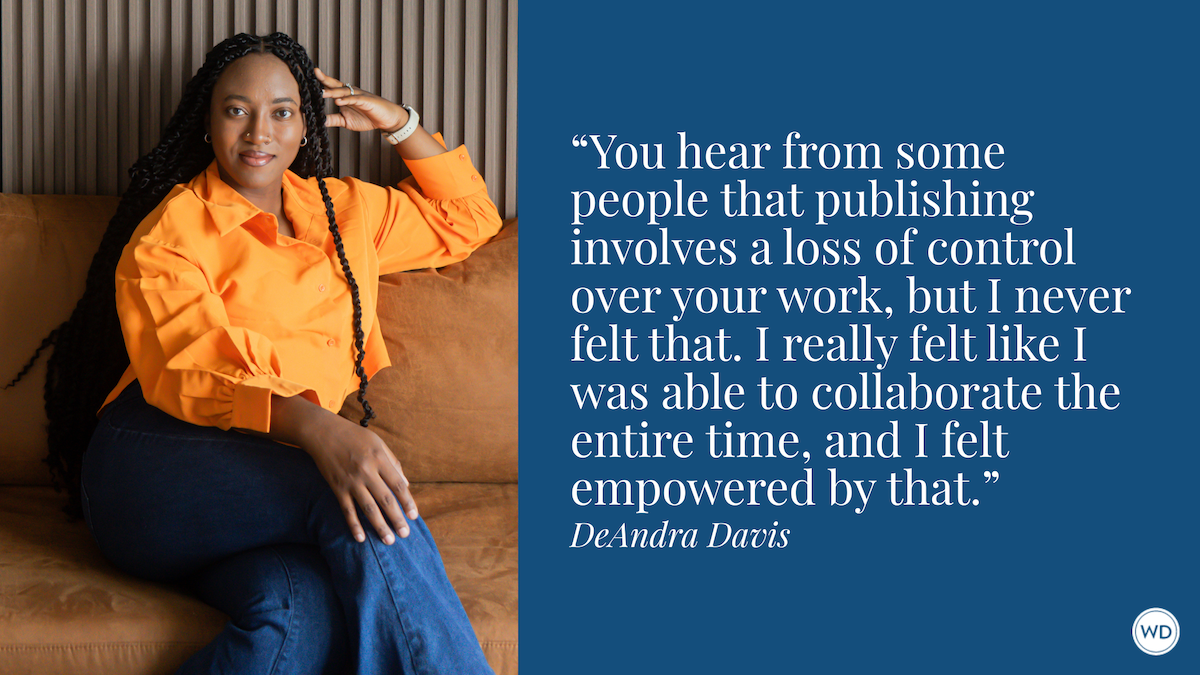7 Strategies for Revising Your Novel
The rewrite is tougher than the draft. But the right rewrite strengthens your fiction into something that lasts to publication and gains a significant readership. Boost your novel-polishing skills with these seven strategies.
You’ve done it: typed The End. Those two wonderful words mark your graduation from always-wanted-to-write-a-novel to someone-who-did. Congratulations. Other ideas might be cooking away in the back of your brain, making you eager to start a new project. Often, this is where the spirit wanes as new writers lose momentum for the old manuscript. Because, you didn’t finish, did you? You only finished the draft. Now you have to focus on revising your novel.
Here’s the bad news (and there’s no good news): The rewrite is tougher than the draft. The draft is infatuation. The right rewrite strengthens your fiction into something that lasts to publication and gains a significant readership.
You know this task needs triage, so you won’t copyedit too soon. You line edit for tone, consistency, and language, but you want more ways to improve.
Boost your novel-polishing skills with these seven strategies.
7 Strategies for Revising Your Novel
1. Embrace the doubt.
Those murky feelings that cloud your mind when contemplating the massive task of revision? Welcome those doubts, that hesitation. A skeptical eye confers an appropriate attitude for rewriting. Every word in every sentence must carry its weight, either revealing character or advancing the story. Now be brave enough to cut or improve weak writing.
IndieBound | Bookshop | Amazon
[WD uses affiliate links.]
2. Go back-to-front when possible.
Let’s say your plan for one brief session is a specific checkpoint. You’re verifying that sensory detail engages every scene, or perhaps you just want to note how many pages are in each chapter to ensure there aren’t twenty-five chapters of about fifteen pages while one chapter sprawls to thirty-five pages. If the revision item does not have to be done starting on page one and working to the last page, flip it and work backwards. This strategy prevents paging through in a direction that can distract you into an unintended sentence-by-sentence reread. The danger of that accidental read is that it risks dulling your reaction to the prose and worse, lets you fall in love with some passages while neglecting others.
3. Structure your novel.
It’s not too late. Whether you’re a pantser, pantser-outliner hybrid, or an outliner, your finished draft can benefit from a new, careful outline. Note what questions and stakes the protagonist faces. How does he change in the end? What about the secondary cast?
Off the top of your head, do you know how many chapters are in your book? How does each chapter start and end? Where are the key actions and turning points found? How many scenes shape each chapter? Bracket each scene on a hard copy to reveal whether too much exposition lurks between the scenes. Is the climax close enough to the end that the bulk of the tale is composed of an uphill climb? Is the denouement placed to allow a satisfying, thoughtful resolution?
Gleaning the structure is a terrific exercise in critical examination. Graph and bullet point the features as though deconstructing someone else’s novel. This is not a time for emotional attachment to the piece; just factually note everything that displays the arc of the story, then see what surprises you or doesn’t fit.
4. Revisit characterization.
With an accurate structure in hand, revisit your character construction while remembering the point of every passage. Did you use particularity in their descriptions? Is the reader shown what motivates every main character?
Crack open the draft to any chunk of dialogue. How obvious is it which of your well-crafted characters is speaking based on the sentences within the quotes? (Ah, yes, that’s just how a pilot/mad scientist/cowgirl would say such a thing.)
Perhaps your setting approaches the standing of character. Lovely, but don’t let the prose get flabby or insignificant—this is an opportunity for imaginative choices.
5. Task your computer.
Various software programs highlight potential weak spots such as poor grammar and punctuation, or an overuse of modifiers, but any word processing program can be employed to help electronically. Do you have a pet phrase? Use the search function to find those repeats, then fix them. If you gave a person a verbal tic (perhaps she says “Nah” instead of “No”), do a quick find for the special term to ensure it’s not overused. And if another character displays the same tic, make it intentional, not an author slip.
When creating another hard copy to hand edit, select a different font for the second printing. Because of the different spacing, switching from Times New Roman to Courier can help freshen your eyes to the words.
6. Listen to it.
Hopefully, you read aloud when revising, but you can do more. When my publisher sent author copies of my debut novel’s audio version, I reveled in that first experience of listening to a voice-acting pro read Orchids and Stone. However, I had heard it before, read by my computer.
There are good programs available—I use Natural Reader, which offers a free trial—that lets you listen to any document. This computer-generated reading will be flat, but the robotic affect is a good thing, because your writing must stand on its own, without inflection to carry the drama and dialogue. Chances are you’ll keep putting the program on pause and clicking back to the document to make edits.
Unintended alliterations, assonance, and consonance are borne in every sentence and surrounding paragraph are much more apparent when voiced. You might marvel over having missed some of these now-obvious editorial problems in print or on the monitor. You’ll hear repetitions that you didn’t see.
Good reading programs allow you to select the speed and gender of the speaker. After a significant rewrite, choose the other gender for the computer’s reading voice, then listen to the entire manuscript a second time. Chances are, you’ll still discover small improvements to make.
7. Continue to study the craft.
While your polished draft gets some drawer time or is out with beta readers, reread diverse books on writing, studying instruction on revision. Let Robert Olen Butler admonish you to avoid abstraction, interpretation, and -izing (don’t generalize, summarize or analyze). Pay attention when David Morrell asks if you really want to publish that sentence in that form. Listen to Sol Stein’s warning about tunnel revision—the mistake of only tweaking small ticket items on a rewriting pass while missing the big picture and exposing your pages to excessive front-to-back reading, which makes your editing eye grow cold.
Improving your knowledge of the craft will improve your rewriting skills.
Here’s the deal: new writers often mire themselves and their work in the world of the unpublished due to a lack of self-editing their way to a polished manuscript. The only hope your draft has of becoming a well-read novel is you, and how much effort you put into the rewrite. Go all in.
Lisa Preston is the author of Orchids and Stone, as well as several nonfiction books on animal care. Her experiences as a mountain climber, fire-department paramedic, and police sergeant are channeled into fiction that is suspenseful, fast-paced, and well acquainted with human drama. She has lived in Ariz., Calif., and Alaska. and now makes her home in western Washington. Visit her at LisaPreston.com and on Facebook.








